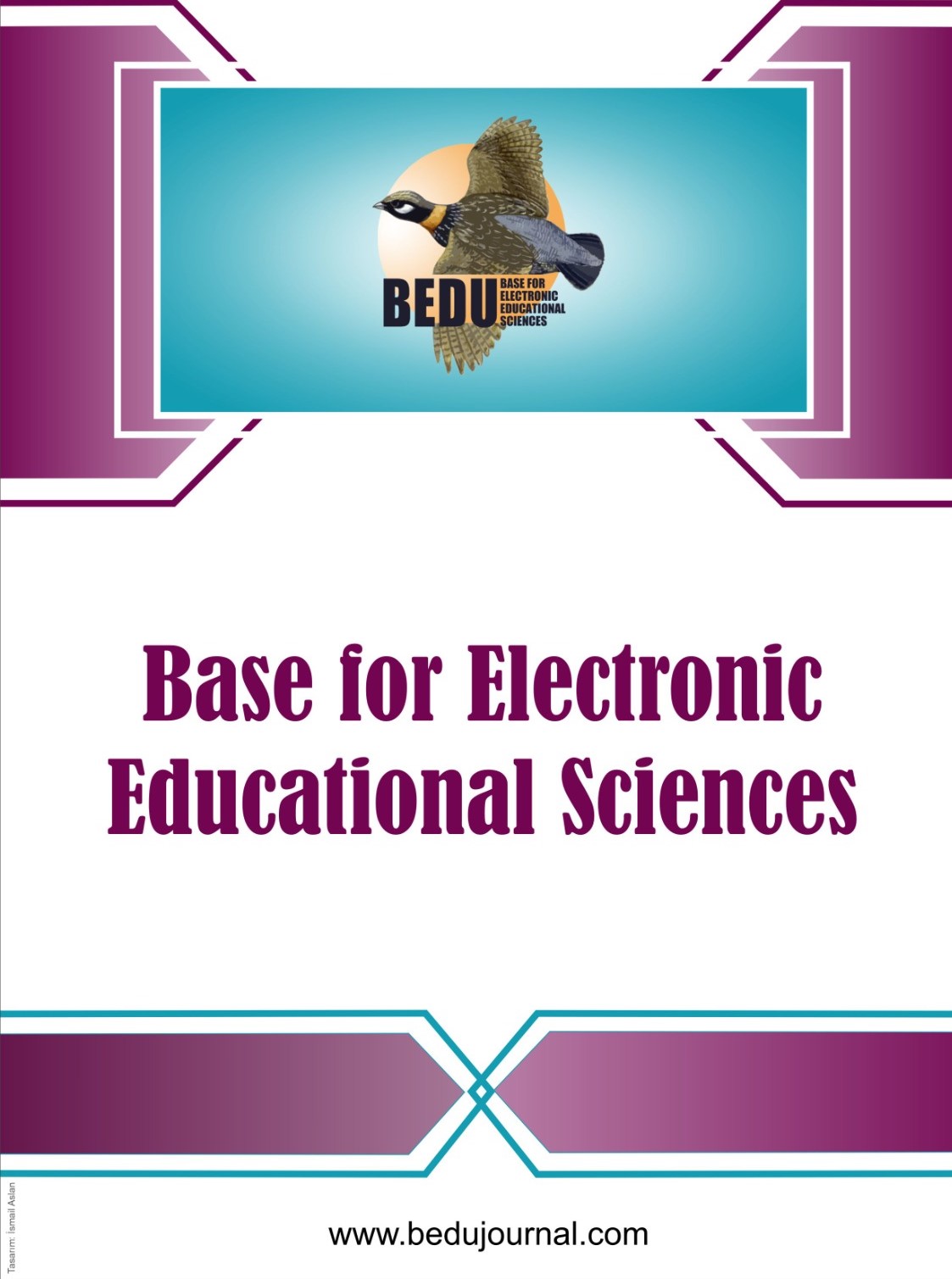Research article | Open Access
Base for Electronic Educational Sciences 2023, Vol. 4(1) 49-59
An Idiographic Study on the Stereotypic Images of Teachers Through Draw‐A‐Scientist Test (Dast)
pp. 49 - 59 | DOI: https://doi.org/10.29329/bedu.2023.528.4
Publish Date: March 14, 2023 | Single/Total View: 142/678 | Single/Total Download: 188/1.197
Abstract
Children are born with some intrinsic qualities as well as certain invisible endowments, both of which contribute to the fact that each child is endowed as well as unique. In addition, children might either have an introverted or outgoing personality. Youngsters who are more introverted may also have a vibrant inner world, just as children who are more extroverted. Those kids are more likely to rely on their own internal resources in order to educate themselves. These children have opinions and perspectives that are very complex. In addition, even if they prefer their own company, introverted youngsters often have a strong interest in playing creative games. In addition to this, they have a propensity to spend their time engaging in solo pastimes such as painting. There is a wide range of abilities among youngsters, including the ability to answer verbally or in writing to queries. Therefore, the Draw-A-Scientist Test, also known as DAST (Chambers, 1983), is a resourceful opportunity for scientists who are attempting to delve into the intricacies of children's cognitive and emotional worlds. This test evaluates the paintings of young children and can be administered to children as young as three years old. As a result, the current study was constructed based on the cognitive constructs of a kindergartener aged six who was given the Draw-A-Scientist Test to assess their perceptions of teachers in general (DAST). It should come as no surprise that the preconceived notions that youngsters have about their instructors significantly impact their capacity to learn. As a consequence, the results of the study might have useful consequences for pedagogy, education, and scientific research.
Keywords: idiographic, nursery, teacher image, the Draw‐A‐Scientist Test (DAST)
APA 7th edition
Ulum, O.G. (2023). An Idiographic Study on the Stereotypic Images of Teachers Through Draw‐A‐Scientist Test (Dast). Base for Electronic Educational Sciences, 4(1), 49-59. https://doi.org/10.29329/bedu.2023.528.4
Harvard
Ulum, O. (2023). An Idiographic Study on the Stereotypic Images of Teachers Through Draw‐A‐Scientist Test (Dast). Base for Electronic Educational Sciences, 4(1), pp. 49-59.
Chicago 16th edition
Ulum, Omer Gokhan (2023). "An Idiographic Study on the Stereotypic Images of Teachers Through Draw‐A‐Scientist Test (Dast)". Base for Electronic Educational Sciences 4 (1):49-59. https://doi.org/10.29329/bedu.2023.528.4
Chambers, D. W. (1983). Stereotypic images of the scientist: The draw-a-scientist test. Science education, 67(2), 255-265.
Crook, C. (1984). Factors influencing the use of transparency in children’s drawing. British Journal of Developmental Psychology, 2, 213–221.
Cummings, J. A. (1986). Projective drawings. In H. Knoff (Ed.), The assessment of child and adolescent personality, pp. 199-244. New York: Guilford Press.
Dickmeyer, N. (1989). ‘Metaphor, model, and theory in education research’. Teachers College Record, 91(2), pp. 151–160.
Farokhi, M., & Hashemi, M. (2011). The analysis of children's drawings: social, emotional, physical, and psychological aspects. Procedia-Social and Behavioral Sciences, 30, 2219-2224.
Fralick, B., Kearn, J., Thompson, S., & Lyons, J. (2009). How middle schoolers draw engineers and scientists. Journal of Science Education and Technology, 18(1), 60-73.
Harris, D. B. (1963). Children's drawings as a measure of intellectual maturity. New York: Harcourt, Brace & World.
Hawkes, T. (1972). Metaphor. London: Methuen Publishing.
King, S. H. (1995). 'Pictures Drawn from Memory': William Carleton's Experience of Famine. The Irish Review, 17/18, 80-89.
Koppitz, E. M. (1968). Psychological evaluation of children's human figure drawings. New York: Grune & Stratton.
Lewis, D. & Greene, J. (1983). Your Child's Drawings ... their hidden meaning. London: Hutchinson.
Lowenfeld, V. & Brittain, W. L. (1987). Creative and mental growth. New York: Macmillan Publishing Company.
Lubin, B., Larsen, R. M., & Matarazzo, J. D. (1984). Patterns of psychological test usage in the United States: 1935-1982. American Psychologist, 39, 451-454.
Meichenbaum, D. (1977). Cognitive behavior modification: An integrative approach. New York: Plenum Press.
Minogue, J. (2010). What is the teacher doing? What are the students doing? An application of the draw-a-science-teacher-test. Journal of Science Teacher Education, 21(7), 767-781.
Moseley, C., Desjean‐Perrotta, B., & Utley, J. (2010). The draw‐an‐environment test rubric (DAET‐R): Exploring pre‐service teachers’ mental models of the environment. Environmental Education Research, 16(2), 189-208.
Steinke, J., Lapinski, M. K., Crocker, N., Zietsman-Thomas, A., Williams, Y., Evergreen, S. H., & Kuchibhotla, S. (2007). Assessing media influences on middle school–aged children's perceptions of women in science using the Draw-A-Scientist Test (DAST). Science Communication, 29(1), 35-64.
Thomas G. V., Silk A.M. (1990). An Introduction to the Psychology of Children's Drawings. London: Harvester Wheatsheaf.
Thomas, M. D., Henley, T. B., & Snell, C. M. (2006). The draw a scientist test: A different population and a somewhat different story. College Student Journal, 40(1).
Vukovich, D. H. (1983). The use of projective assessment by school psychologists. School Psychology Review, 12, 358-364.
Weber, S. J., & Mitchell, C. (2002). That's funny you don't look like a teacher!: Interrogating images, identity, and popular culture. New York: Routledge.
Wilson, B. and Wilson, M. (1977) ‘An iconoclastic view of the imagery sources in the drawings of young people’, Art Education, 30/19, 5–11.
Wilson, B. & Wilson, M. (1979). ‘Children’s story drawings: reinventing worlds’. School Arts, 78/8, 6–11.
